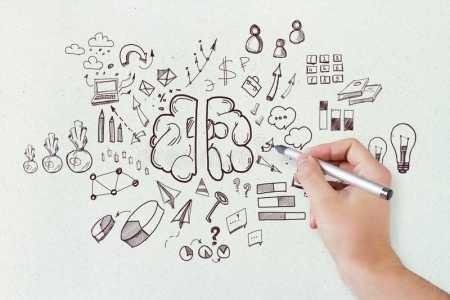Suffering from decency? Then this article is for you
Every day we have to make any decisions. Big or small deliberately or unwittingly Waking up in the morning "tea or coffee?" Starting from "Will you marry me?". We can take many decisions as unconscious. But many people have a lot of problems in taking decisions that have many options, or those decisions that will be very much in life.
How does our brain work in making decisions?
Simply put, our brain or brain thinks about a number of alternative solutions to the problem. And compare those options. The brain works in two types to compare these options. The first is to decide on unconsciously. Such decisions are taken quickly to make decisions, and those decisions are not far off. The second is conscious decision. Very important decisions are taken in this way. There is a lot of attention and analysis needed to make such decisions, and people face many problems in making such decisions. This post will be discussed on how to make such a decision in this post today.
If you take important decisions on a few steps, the best results are available. These are:
- Identify problems and set goals
- Possible alternative solutions to list
- Analysis of possible outcomes of
options * Choosing the best option from options - Decision making * Applying decision
- Latest result analysis
Identify problems and set goals A
few questions in this step You have to find out the answers. First of all, what is the problem or situation in which the decision is being made in terms of situation? It is very important to get an answer to this question. Because the problem is not properly identified, the solution can never be discussed or thought.
Secondly, who will be the decision on which decision will be taken? Each decision has an effect force. Those decisions will have to be taken into account when those who are in the impact, ie those who decide on the impact of the decision.
Thirdly, what will be the decision taken? The goal must be precise, because a goal can be achieved in a number of alternate ways.
There are also a few things to keep in mind. The first is the time, the second is the meaning, and the third is the relationship. Must be taken into consideration of how fast the decision will be, or how much money will be needed to reflect the decision, or what will be the effect of those decisions on the decision.
List the possible alternative solutions
At the beginning of this step you might think that you have no option, so that's why this step is very important. You must list alternate solutions, regardless of the problem. Below are a few of the ways in which we will be able to know how to solve the problem solving issues.
Brainstorming: At the beginning of this process, remember that no ideas are small. You have to think about your old ideas and see them from a new perspective. In this case you can take help of your colleagues. Then you can see the problem from their perspective. This will make it easier for you to identify the problem and move forward. After thinking about the ideas, you must write the ideas. You have to write an idea that sounds ridiculous. After writing the ideas, you have to think about the limitations of your ideas and what can be the problem. And gradually one has to eliminate ideas. Firstly, exclude those ideas that are impossible to implement.
Decision tree: In this process you must first confirm your problem. Then the problem should be to find out what possible solutions can be. Those solutions have to find out what the outcome can be. Then you have to draw a decision tree, which will start with the problem then the possible solutions and then what are the possible solutions. Through the size of this tree you will get a clear idea of your problem.
Analysis of possible outcomes of options
You will have to think about the possible consequences of the possible solutions that you have thought of through brainstorming or the decision tree. First, write down the possible results below possible solutions. Then identify which results are good or the results are bad. In this case you can use addition or subtraction marks for your convenience. You can also use red or green ink.
Choosing the best of options, that is, to make decisions
In the previous step, you analyzed the results. This is your turn to make a decision. Think of each possible solution again and see its results and from there you can decide which one is the best solution. You must be confident in this step of decision making. You will choose the right decision from your experience and from the time you come to analysis. If you have trouble making a decision then try to contact someone who has read this type of problem earlier.
Applying decisions
Once your decision has been taken, the decision must be implemented. In this case, you will not face any fear or anxiety. Those who have the decision to influence will certainly have to speak with the decision. The more clean you are with them, the more support you have on them. It will be easy to achieve your overall goal through this.
Latest results analysis
In this step, you will need to know the answers to some of the questions that will help you make the next decision. First of all, what were the good and bad aspects of your decision? Secondly, the actual outcome of what you expected was reflected? Thirdly, if you read again in such a problem, will you take the same decision or choose another decision? If you choose another decision why?
Successful completion of each of the steps above is expected to help you achieve your goals. Albert Camus is going to finish with one of the words. He says "Life is the sum of your choices." Before deciding that decision, we need to think carefully and carefully and to reflect on the decision with confidence.
Reference:
- Kahneman, D. (2011) Thinking, Fast and slow, McMillan
Stanovich, KE, & West, RF (2000) Individual Differences in reasoning: Implications for the rational debate?
Damasio, A. (2008). Descartes' Error: Emotion, Reason and Human Brain.

